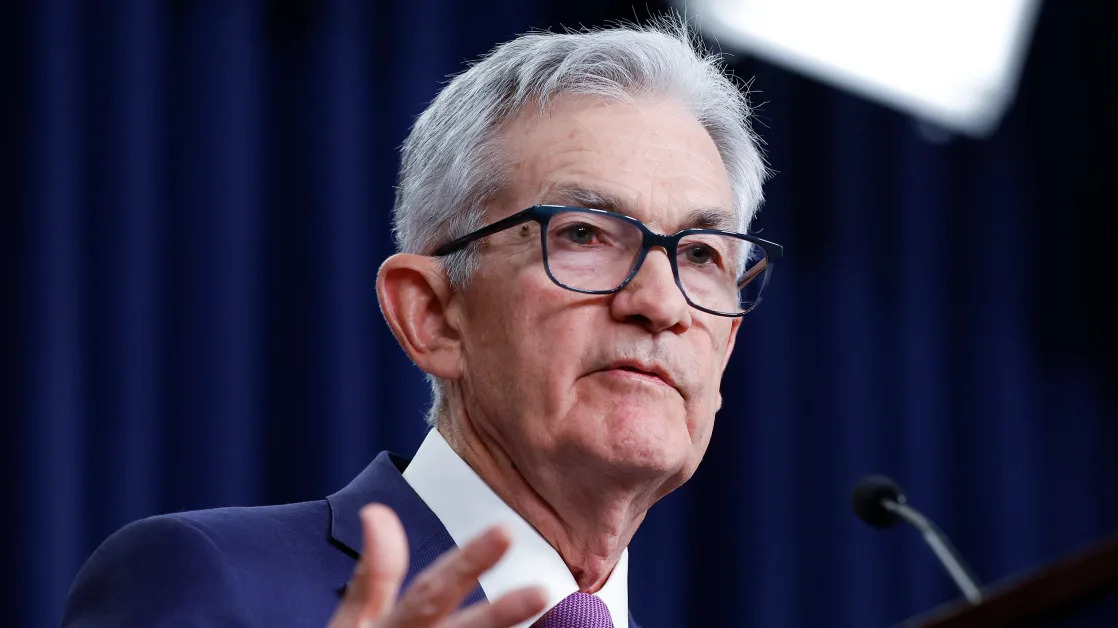(Bloomberg) -- Federal Reserve officials in January expressed their readiness to hold interest rates steady amid stubborn inflation and economic-policy uncertainty.
“Participants indicated that, provided the economy remained near maximum employment, they would want to see further progress on inflation before making additional adjustments to the target range for the federal funds rate,” minutes from the Federal Open Market Committee’s Jan. 28-29 meeting showed.
The minutes, released Wednesday in Washington, said “many participants noted that the committee could hold the policy rate at a restrictive level if the economy remained strong and inflation remained elevated.”
Officials held the Fed’s benchmark policy rate in a range of 4.25%-4.5% at that gathering.
The record of the meeting underscored the cautious approach Fed policymakers are taking after lowering interest rates by a percentage point in the closing months of 2024. Several officials have said they’d like to see inflation cool further toward the Fed’s 2% target before backing another cut.
Investors are currently pricing in one rate cut in 2025, with the possibility of a second, according to futures markets.
Some officials also expressed concern over risks posed by the potential for another debt-ceiling showdown in Washington.
“Regarding the potential for significant swings in reserves over coming months related to debt ceiling dynamics, various participants noted that it may be appropriate to consider pausing or slowing balance sheet runoff until the resolution of this event,” the minutes said.
The Fed is currently allowing up to $25 billion in Treasuries and $35 billion in mortgage-backed securities to mature each month without reinvesting the returned principal.
The US government reached its statutory limit for outstanding debt in January. The Treasury Department has since been using so-called extraordinary measures to extend its ability to pay the federal government’s expenses.
President Donald Trump has backed a plan from House Republicans that would raise the debt ceiling by $4 trillion, but that would likely take months to negotiate.
Trump Uncertainties
Policymakers are also watching the rollout of Trump’s economic-policy plans and how they might shape the economy. Trump is pushing an agenda that includes an increased use of tariffs on US trading partners and an immigration crackdown, both of which could affect the outlook for inflation, the labor market and economic growth.
While characterizing risks in the economy as roughly balanced, policymakers “generally pointed to upside risks to the inflation outlook,” the minutes said.
“Participants cited the possible effects of potential changes in trade and immigration policy, the potential for geopolitical developments to disrupt supply chains, or stronger-than-expected household spending,” the minutes showed.
Still, officials expected that “under appropriate monetary policy” inflation would continue to decline toward their 2% goal.
Some policymakers also noted that difficulties in fully removing seasonal distortions from inflation data at the start of the year could make the figures “harder than usual to interpret.”
Framework Review
Policymakers used the January meeting to kick off the central bank’s five-year review of its monetary policy framework.
Part of the review will focus on what lessons policymakers should draw from the inflationary surge that followed the Covid-19 pandemic, and the central bank’s response to it. It will also address Fed communication.
The minutes showed there will be particular focus on elements introduced in the 2020 framework review, including “the approach of mitigating shortfalls from maximum employment, and the approach of aiming to achieve inflation moderately above 2% following periods of persistently below-target inflation.”
The review is intended to wrap up by late summer.
Meanwhile, officials discussed potential changes to the composition of the central bank’s balance sheet.
“Many participants expressed the view that it would be appropriate to structure purchases in a way that moved the maturity composition of the SOMA portfolio closer to that of the outstanding stock of Treasury debt while also minimizing the risk of disruptions to the market,” the minutes said.
--With assistance from Kevin Varley.
(Updates with additional material from ninth paragraph.)





